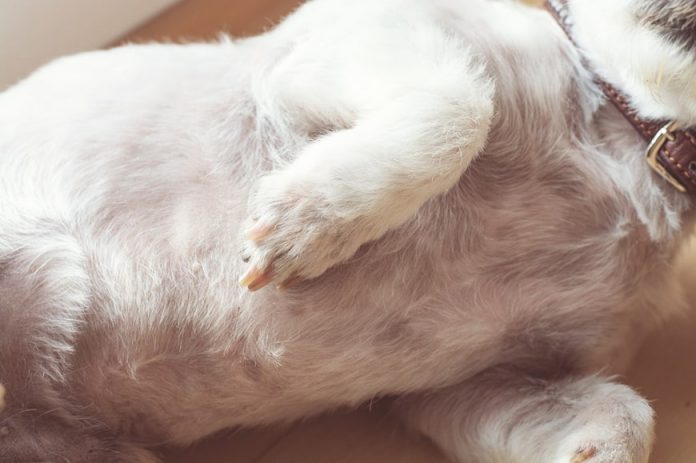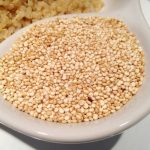It’s quite tricky to identify a dog’s gender just by physically looking at it. In the first place, both genders have nipples. Yes, all dogs will always have their nipples regardless of their sex. The question is why do male dogs have nipples? Are they significant? How do they differ from a female dog’s nipples? Read on to know the answer to all these questions.
The Reason Why Male Dogs Have Nipples
Male dogs are mammals so it’s normal for them to have nipples, however, those nipples are undeveloped. They are simply modified sweat glands but contrary to common belief, they do not produce sweat.
What sets male nipples apart from the female ones is that they cannot produce milk. This is due to the fact that male dogs don’t make oxytocin, a hormone responsible for milk production.
But they are not there for no good reason. Your buddy’s nipples can actually tell you if your pet has an underlying illness. If they are bleeding, better bring him to the vet immediately. In some instances, the bleeding is associated with the growth of tumors inside.
Cases like this one should be treated immediately because there are types of tumors that can spread and attack other parts of the body such as the lungs and the lymph nodes.
If your male dog has swollen breasts, it could be an infection or just a sign that your pet is aging. When the enlargement is associated with other symptoms such as discharges, you eventually need to schedule an appointment with your veterinarian.
A clear indication that you need to see the vet as soon as possible is if you touched the nipple area and your pet displayed pain. If your pet whines when you touch that part, it is possible that it is swelling. This is a sign of mastitis that should be treated right away otherwise, it could develop into something fatal.
Mastitis or bacterial infection in the breasts is not just a female dog thing but it’s more common in nursing dogs. However, that does not mean the other gender cannot have it, too. It’s rare but it can also happen to male dogs. In males, it’s often caused by the excess estrogen from their adrenal glands.
Male dogs with mastitis are usually given antibiotics. Clavamox is effective in destroying the bacteria causing the disease. Cephalexin, a human medication, may also be used. It is safer compared to Clavamox because it does not pass into the milk. In the case of male dogs, this is not a problem so both Clavamox and Cephalexin are effective treatments.
Keep an eye for discharges as some dogs secrete puss. If the nipples are showing signs of secretion and they feel strangely warmer than the other parts of the body, this is a sign that you need to get your pet checked. Discharge is also one of the symptoms of mastitis. Other indications are swelling and redness. Some dogs also lose their appetite because of the pain brought by the bacterial infection.
Don’t attempt to give your pet any medication without consent from your vet. If it’s a kind of bacterial infection, your vet will likely prescribe antibiotics. Do note that antibiotics should be used with precaution even in animals.
Your dog needs to get the right dosage as well as the maximum timeframe of taking the meds. Your vet will determine the dosage based on the severity of your pet’s infection and will also take the age of your dog into account when calculating the right dosage.
In case the dog suffered from a nipple injury, you may wash it using a cleanser intended for wounded animals. You can easily purchase this type of product online and over the counter. Just follow the label when using the liquid for disinfecting your pet.
If you are still worried about your pet, better take him to the nearest animal clinic to be sure. Some wounds close right before they are completely healed and this results in abscesses or a collection of pus in the nipple area.
How Many Nipples Does a Male Dog Have?
There is no single answer to this because we have to consider the dog’s breed and size first. A small dog breed, like the Toy Poodle, can have as many as eight nipples. Large dogs, such as the Great Danes, can have as many as 12 nipples.
Do nipples change their color over time? Yes, and this is something you should not be concerned about especially when the pet does not exhibit any sign of illness.
During their younger years, male dogs tend to have pink nipples. This normally changes as they grow older into dark brown or black. If there is any strange discoloration with your pet’s nipples, tell your vet about it.
Where Can You Find a Male Dog’s Nipples?
In case you want to do some kind of inspection, you can find those bumps across the chest all the way to the torso. This is why you can find some near your dog’s genitals but the easiest ones to spot are the first two located on the chest. If you can see them, there are pairs of nipples after them. There’s a pair located right next to your pet’s abdominal area.
Nipples are spread out and they are often mistaken for ticks. It’s rare but some dogs have their nipples on the inside of their legs. If a bump in a strange area looks close to the first bump then it’s likely a nipple.
Many pet owners end up trying to pluck them out, believing they are disturbing ticks, only to realize that those are not external parasites but actually just their pet’s nipples. Some pet owners only discover them while bathing or shaving their male dogs.
The Bottom Line
It matters to know that male dogs have nipples too so you don’t make the mistake of trying to pluck them out. Just imagine how painful it is when someone tries to pull on your own nipples! Our dogs can feel pain, too and we don’t want that to happen just because we cannot differentiate their nipples from ticks.
Aside from that, your pet’s nipples can also indicate if there is something wrong inside his body. A swollen nipple can be a sign that a male dog is suffering from testicular cancer so don’t forget to check those nipples from time to time!






















